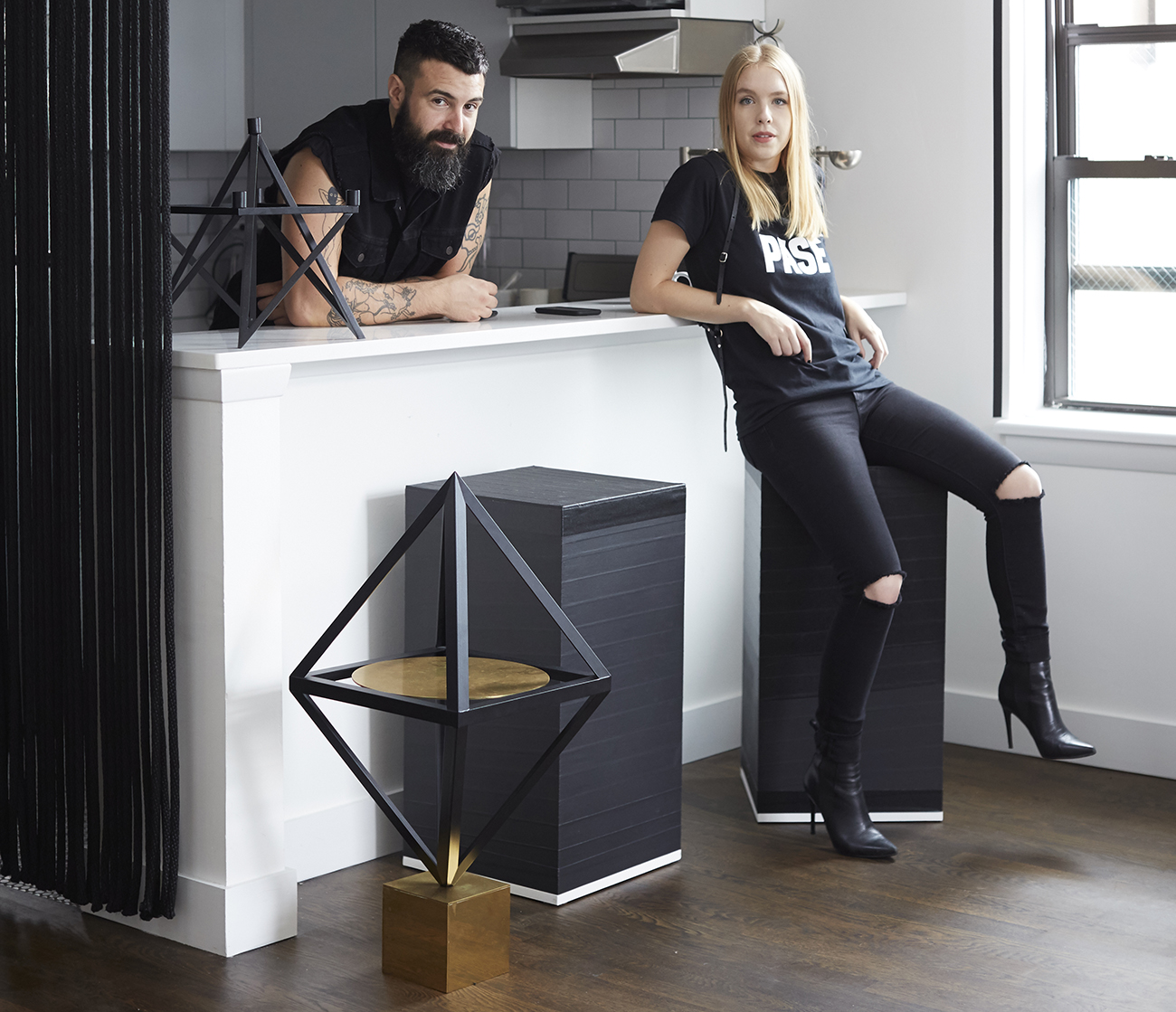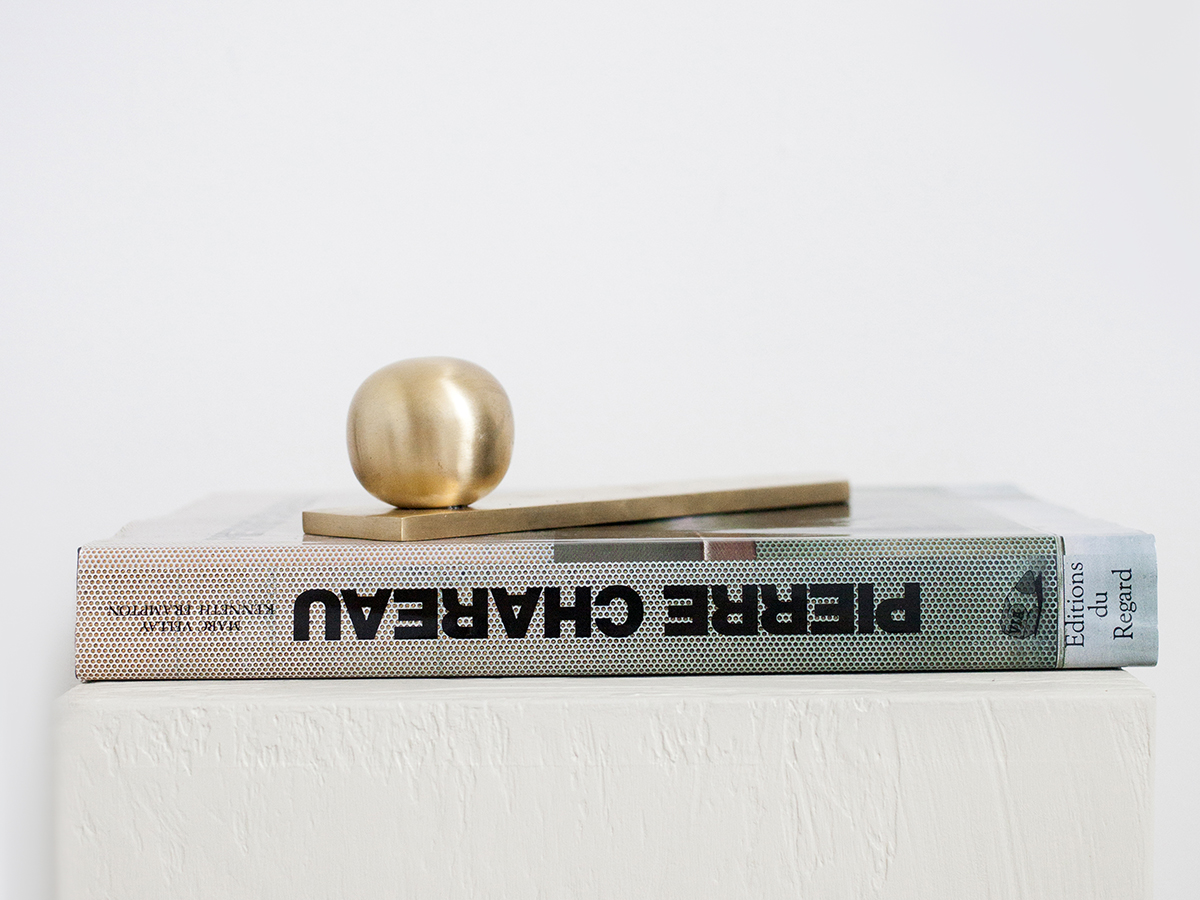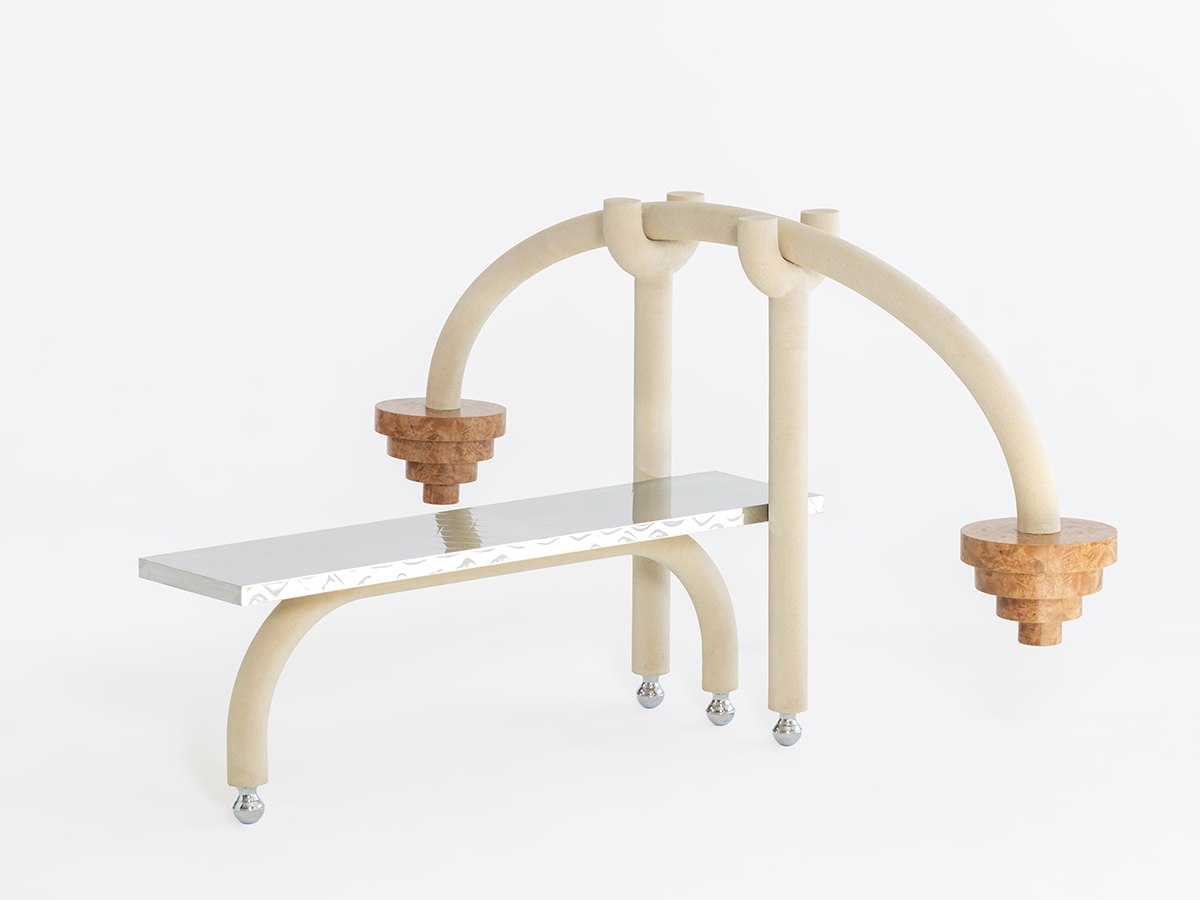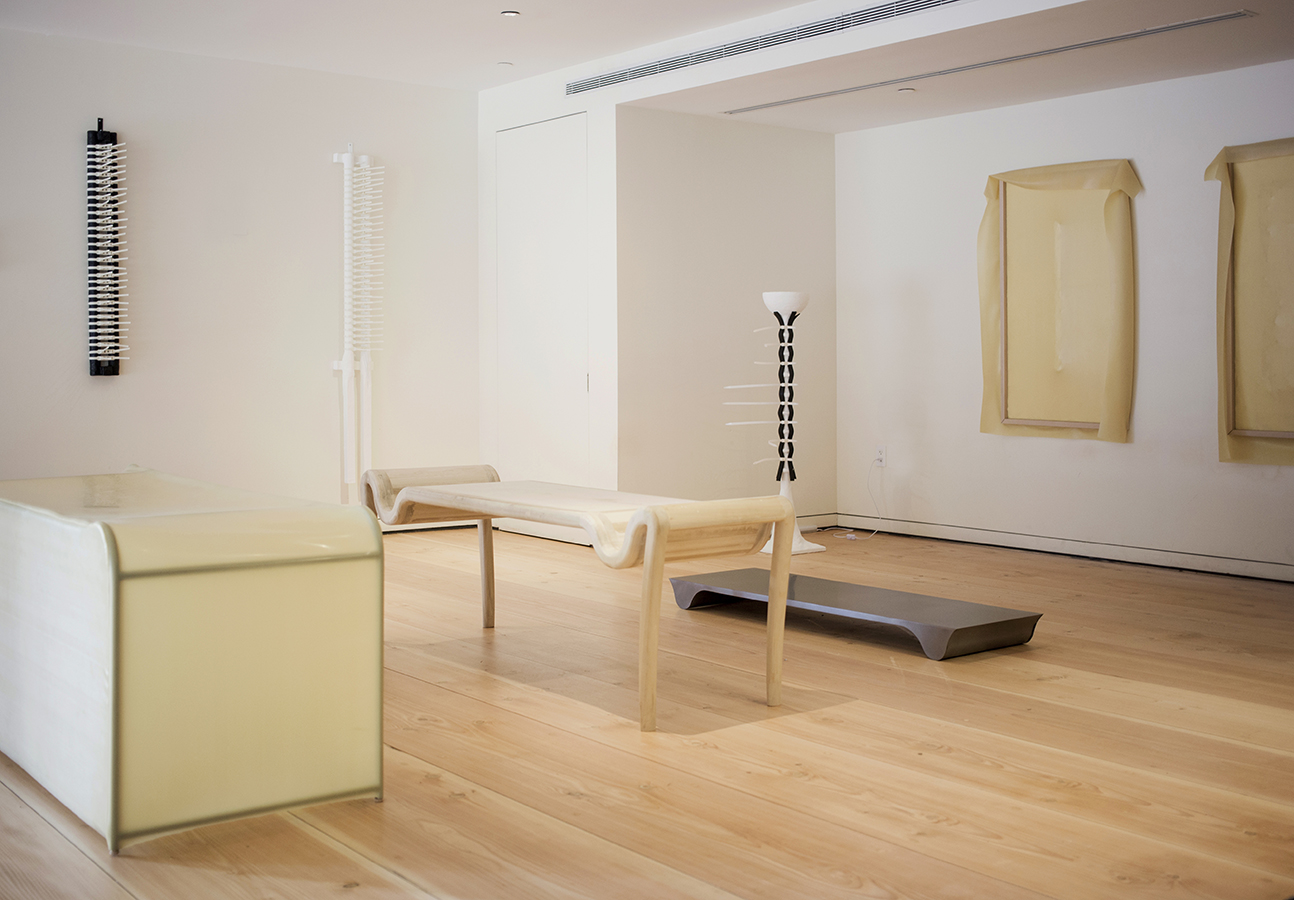
04.03.19
Q+A
Frustrated by the Limits of Design, Material Lust Sets Its Sights on the Art World
A wave of wood climbs from a cocoon of pale yellow latex. A white plaster tower, evoking the silhouette of a floor lamp, is lined with black rubber and cinched by a spine of plastic handcuffs. Poplar frames are attached to giant squares of latex skin, which drape limply around the edges. These uncanny approximations of familiar forms, or renderings of forms entirely unfamiliar, are the latest project of Material Lust, the collaboration between Christian Lopez Swafford and Lauren Larson.
Not much had recently been heard from Material Lust until this March, when, after a few quiet years, they popped back on our radar, showing neither at a design gallery nor a furniture show, but at the New York art fair Independent, in a Spring Studios skybox overlooking a maze of gallery booths. Frustrated by the literalness of conversations they were having in the world of furniture design — and with their practice taking an increasingly conceptual turn — the pair made the conscious decision to turn Material Lust from a design brand into an artist collective. (Lopez Swafford and Larson haven’t totally given up on the functional — they’re still heavily into their more object-driven label, Orphan Work.)
The body of work Material Lust presented at Independent, which they’ve titled Phase VI, denies function, and instead appropriates the language of design to produce eerie one-off sculptures. Phase VI holds a funhouse mirror up to our designed world, estranging us not only from our interiors, but from our own bodies. We recently spoke to them to find out more.
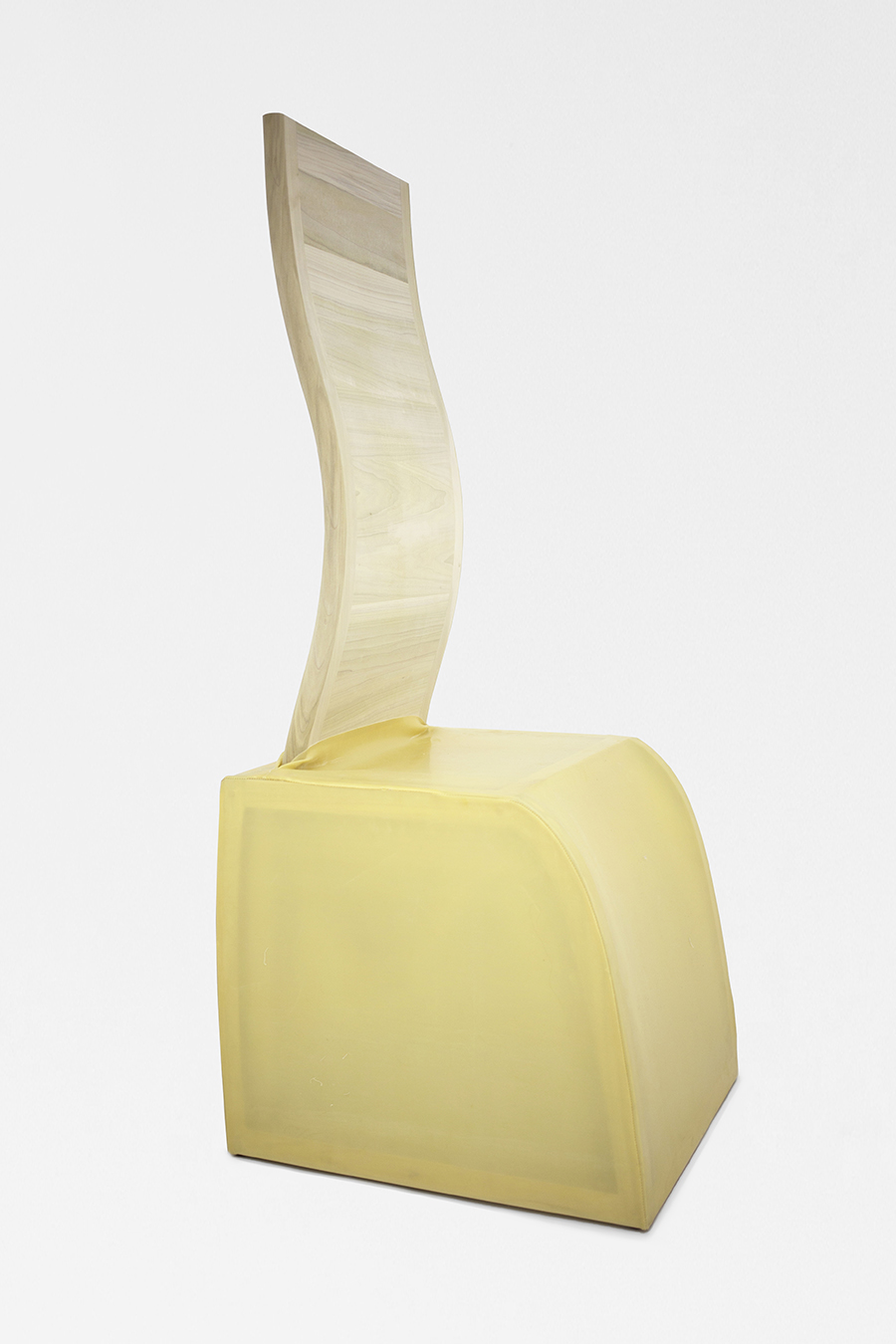
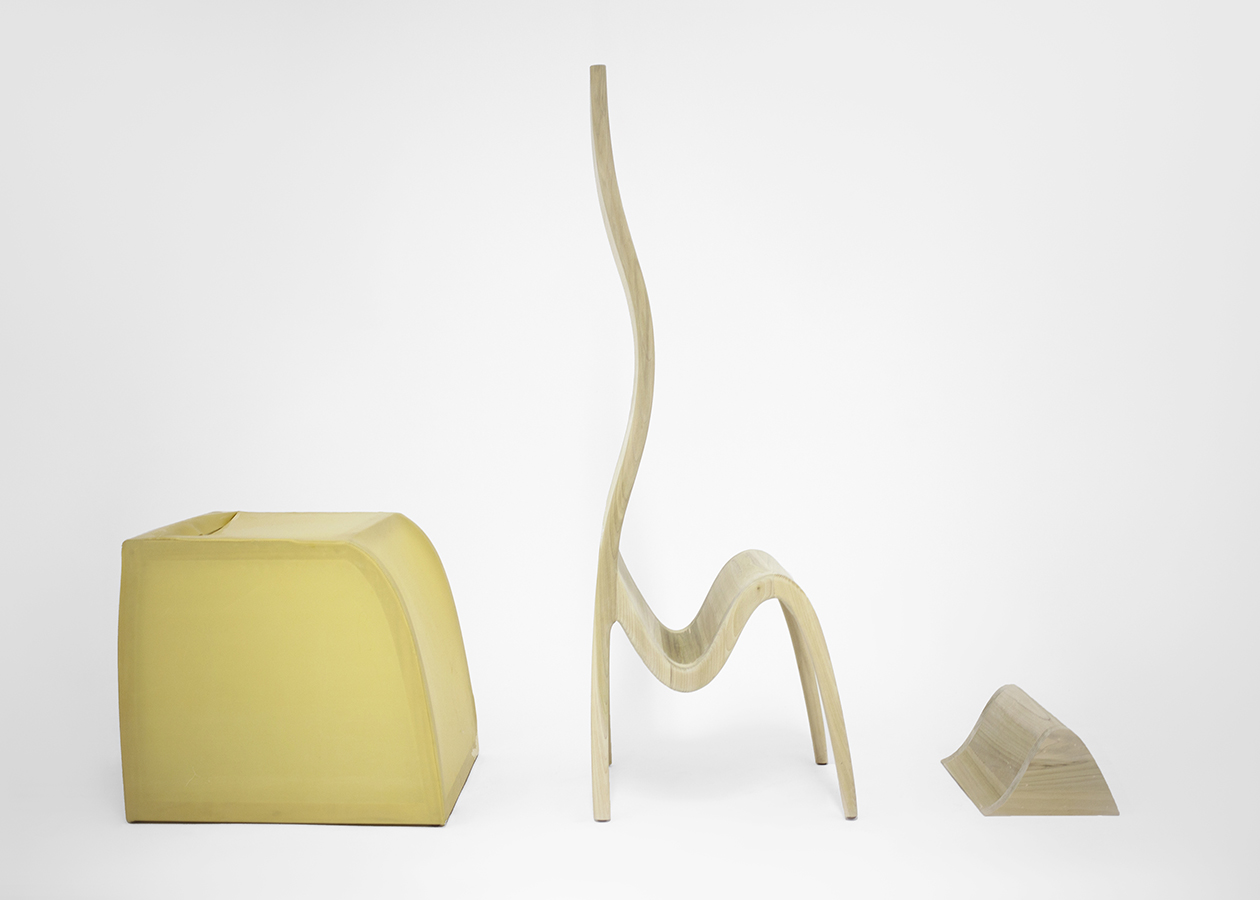
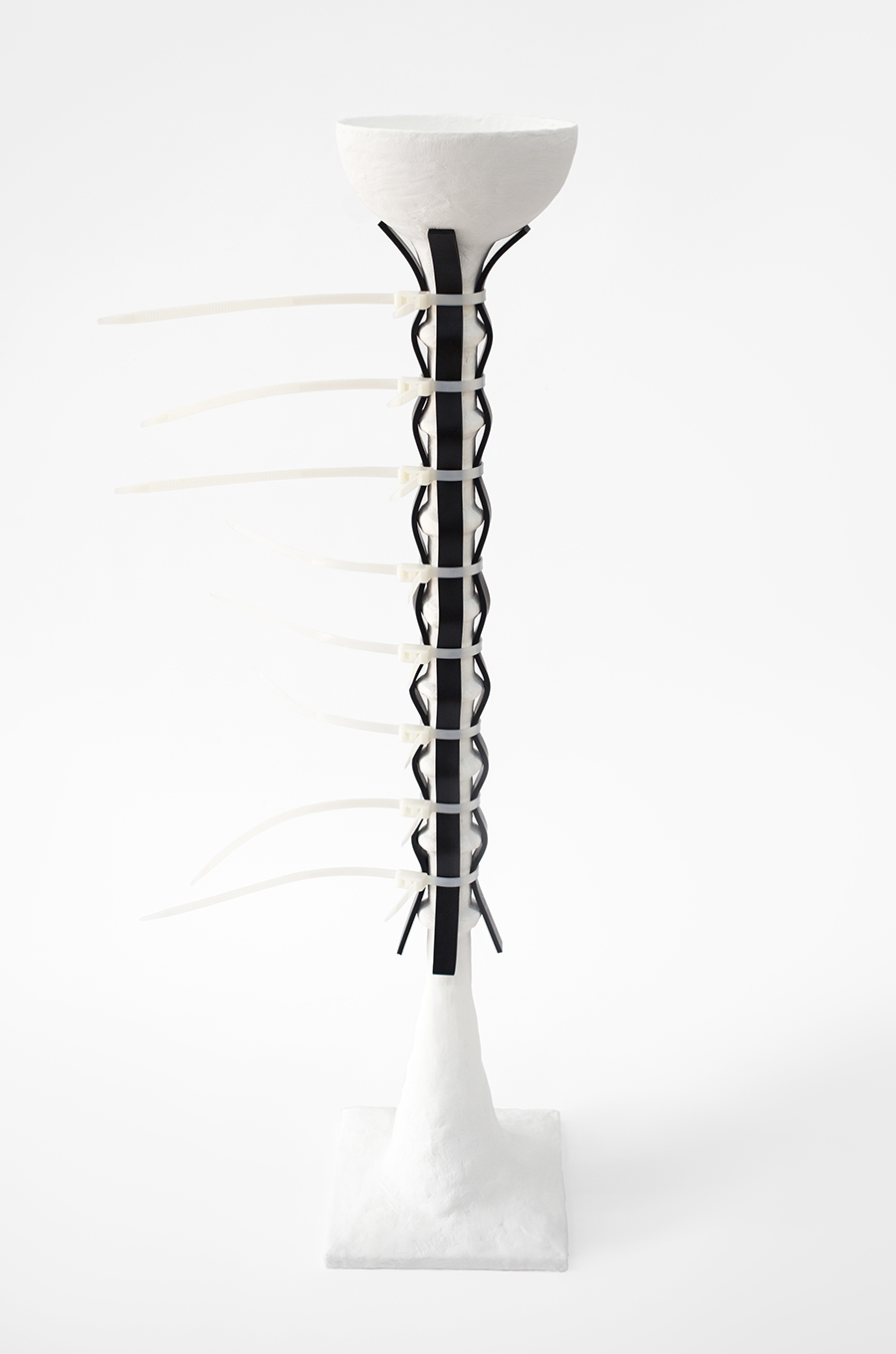
This is your first collection — or, perhaps more accurately, body of work — you’ve shared in three years. Why did you decide to unveil it at an art fair instead of in a design context?
Christian: Material Lust has gotten more and more conceptual, which is what we always wanted. At the same time, it also gotten less and less functional. It doesn’t really make sense for us to show this work at design fairs anymore.
Lauren: We wanted to have conversations about the meaning behind the work and less about the material or construction. We found a lot of times people were like, “I love this, but can you make it in brass?” Or, “Can you make it bigger?” That’s fine, but that’s not really the place Christian and I want to be making our work in. We want to make one-off sculptures. They’re rooted in functionality just because it’s in our blood, but functionality’s not the intent behind them.
How did the response at Independent compare to that of a showroom or a design context?
Lauren: It was the most fulfilling show we’ve ever done, because we were having conversations with a range of people — curators, collectors, advisors, other artists, students. We were talking about the work, and the meaning behind it. A lot of time with design, whoever the buyer is, they want to have a conversation about how the piece works for them. It really was the first time where people wanted to learn about us.
Also, Independent is really rooted in conversations. We made an effort to be self-represented, because we can really tell our story the best.
Christian: We were the only ones at Independent without a gallery.
Lauren: It was the first time they had done that. It was the first time we had done that.
We wanted to have conversations about the meaning behind the work and less about the material or construction. We found a lot of times people were like, ‘I love this, but can you make it in brass?’
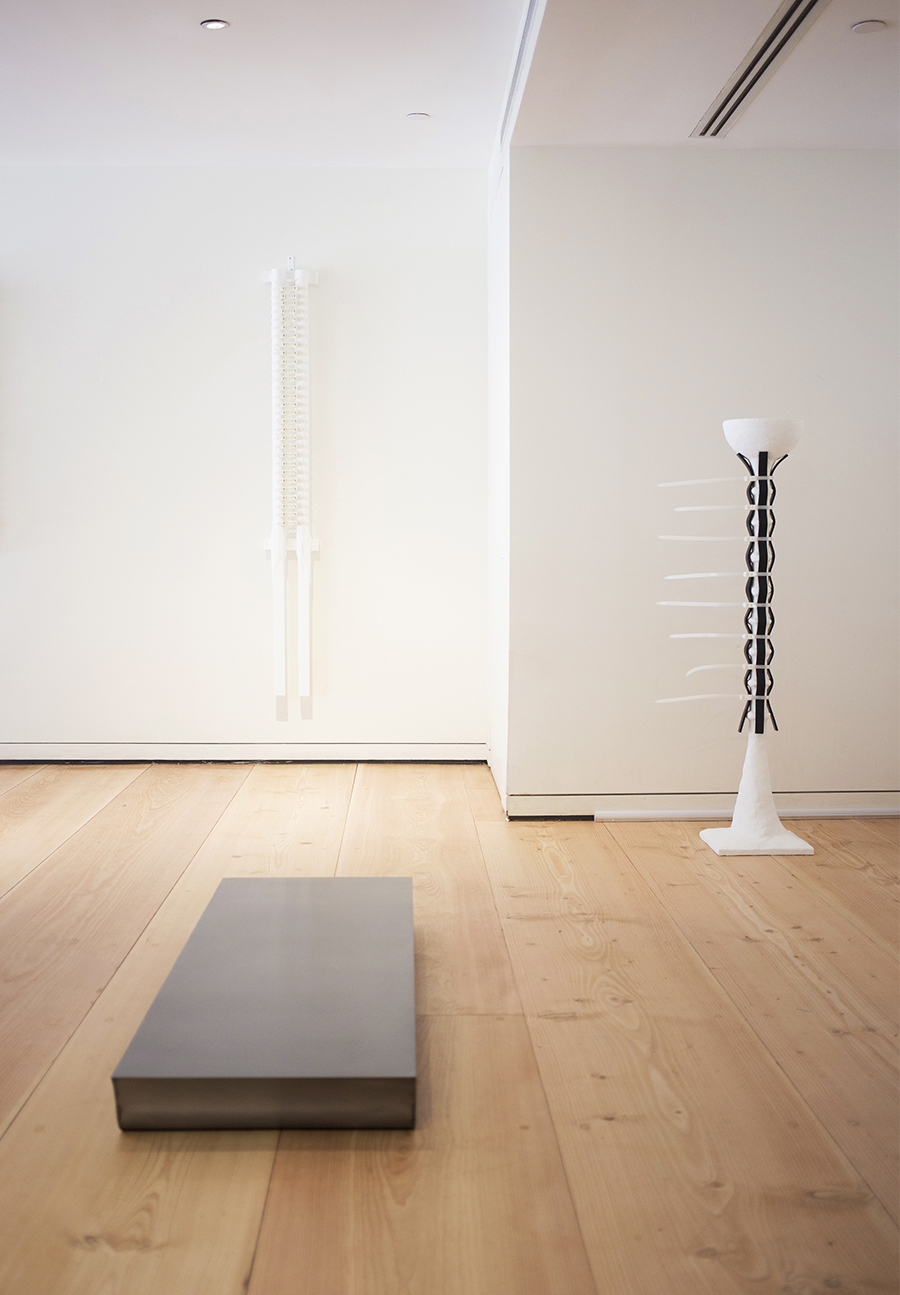
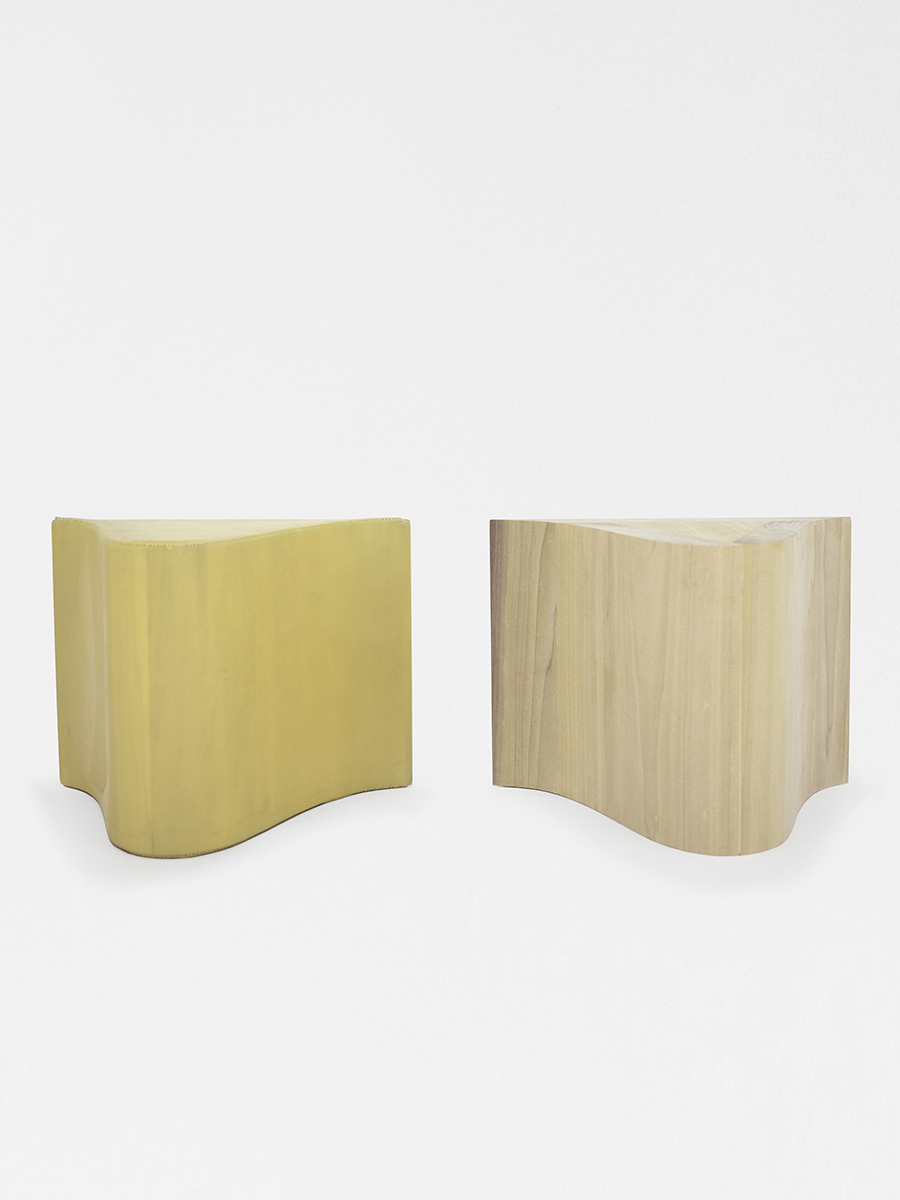
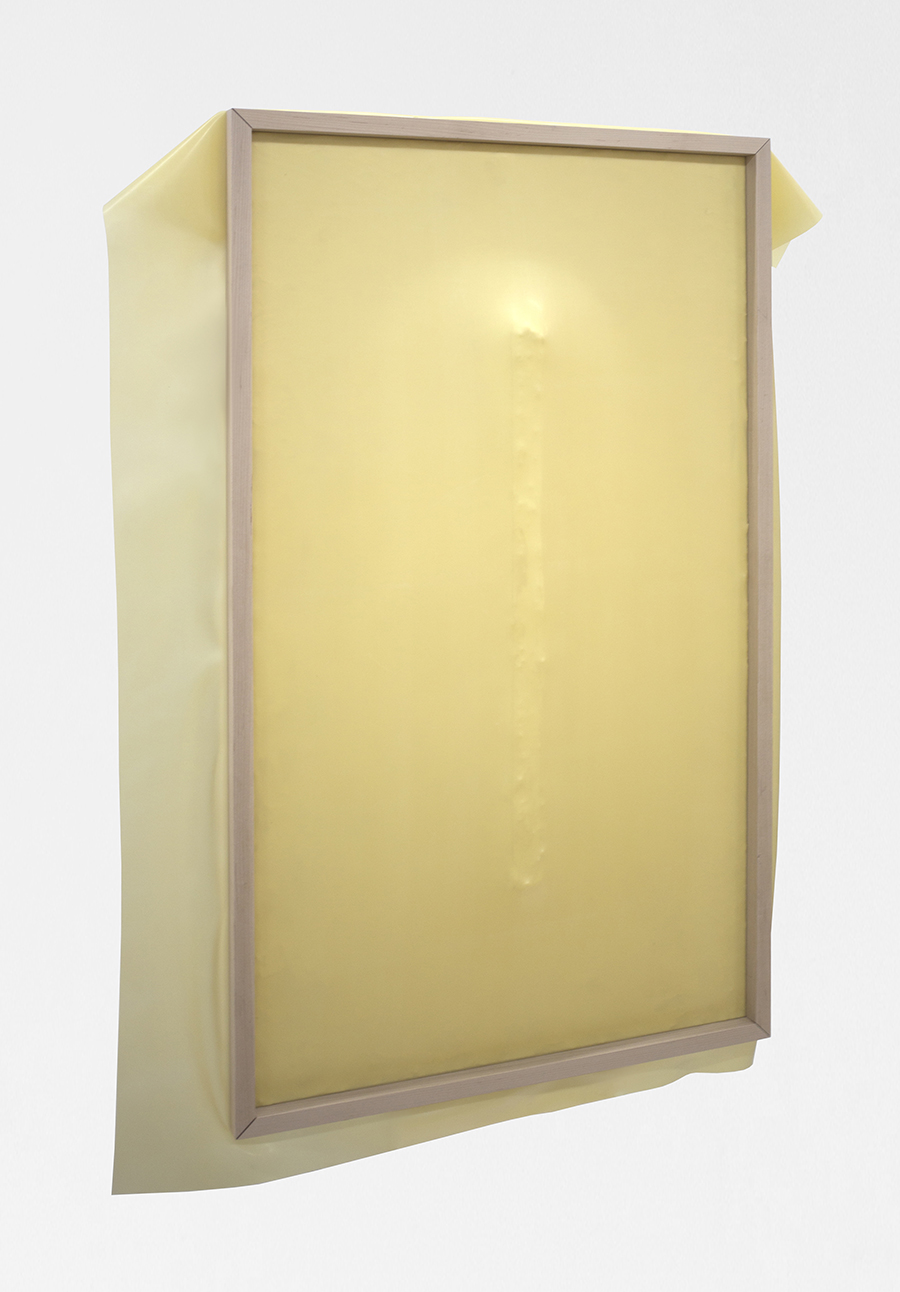
A lot of the forms of your sculptures are rooted in the language of design: Many pieces in this series approximate chairs or lamps, for example. Where does functionality — or the lack thereof — fit in?
Christian: We’ve tried to strip away functionality as much as possible. There are nods to functionality, but we’ve changed the sizing of things and the material of things so that they’re not functional.
I couldn’t sit on the chair-like sculpture, for example?
Christian: No. You wouldn’t want to. It takes up the space of a chair, and we’re still thinking about the “user,” which is very much a design mentality for talking about sculpture, but I love the idea of it taking up the space of a chair and replacing a chair in your house with a sculpture that occupies its silhouette.
One of the other things relying on a design language does, even if it eschews function, is implicate the body. In this body of work, that implication often feels uncomfortable, or even coercive; for example, some pieces are wrapped with what are actually plastic zip-tie style handcuffs. How is the relationship to the body being articulated differently in this sculptural work, which still speaks to function but doesn’t have it? And, how does that play in with the notions of what you’ve called “oppressionism” in your previous design work?
Christian: External oppression is what most people think about it when you talk about oppression, but we focused on internal oppression — like mental health issues, or disease, or the constant thought of the mortality, and how that has its own kind of oppressive nature.
The looming failure of the body.
Christian: That’s a universal thing, you know? A chair has more to do with the body than almost any piece of furniture, and we wanted to try and articulate a relationship to the body. That’s the reason a lot of the design elements stayed. It naturally happened.
Lauren: Also, you know you can’t sit on it, and if you did try, it would be unsettling. Your butt would sink down into that dip. Your back would be pushed out. Through the language of design, we use the gestures of the body to put in your mind this contorted position.
Christian: If you feel like you’re being oppressed, you set up these protective layers, either consciously or subconsciously. We have them visually as protective layers, but at the same time as they’re protecting, they’re constricting.
Lauren: Like, with the bench…
Christian: And we keep saying “bench, chair,” but they’re not even those things.
Lauren: We named them with serial numbers.
Christian: But people called them chairs without us saying anything.
Lauren: When we were working on them together, Christian kept getting really mad at me, because I was like, “The chair, the chair, the chair.” And, he was like “Stop calling it a chair.”
Christian: It’s not a chair!
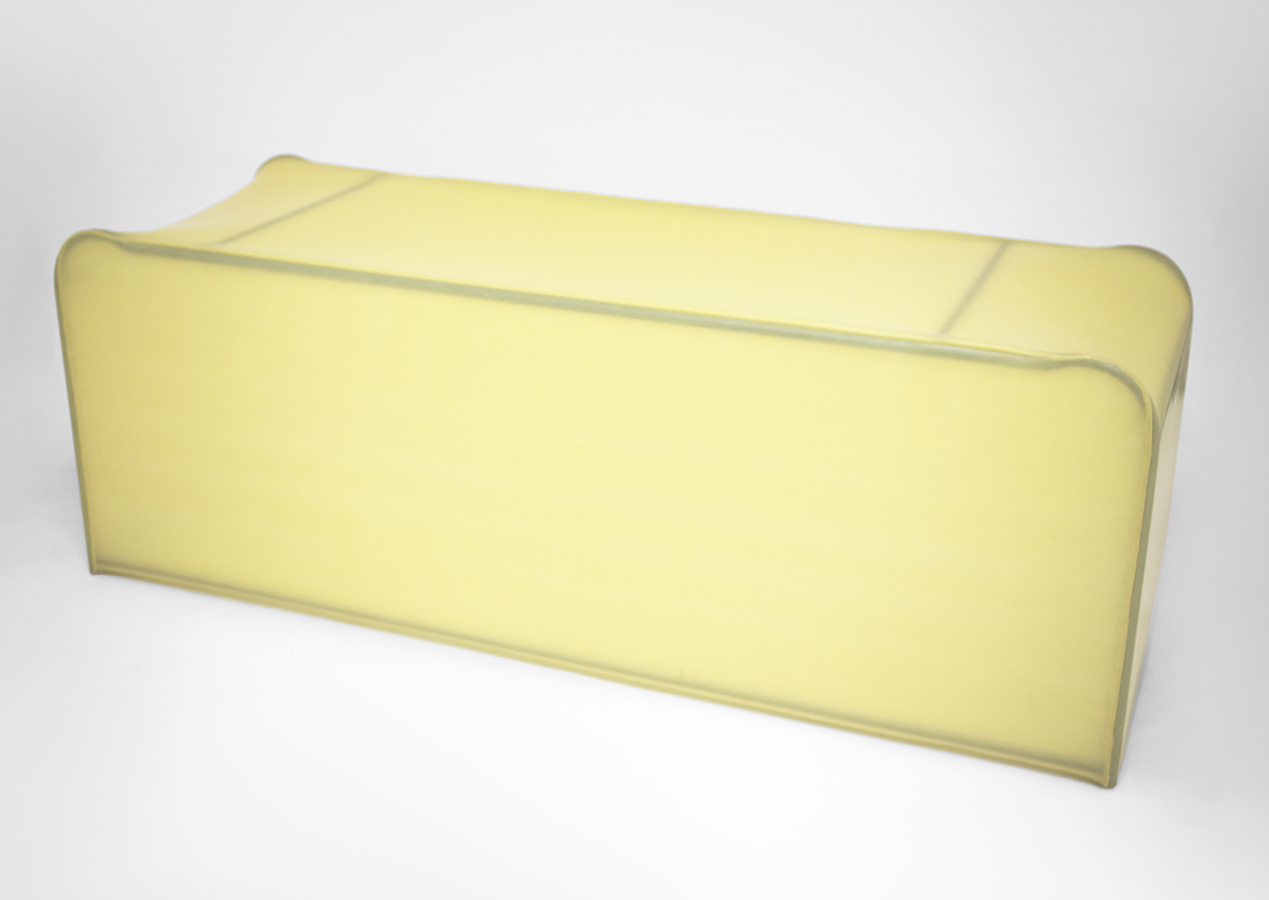
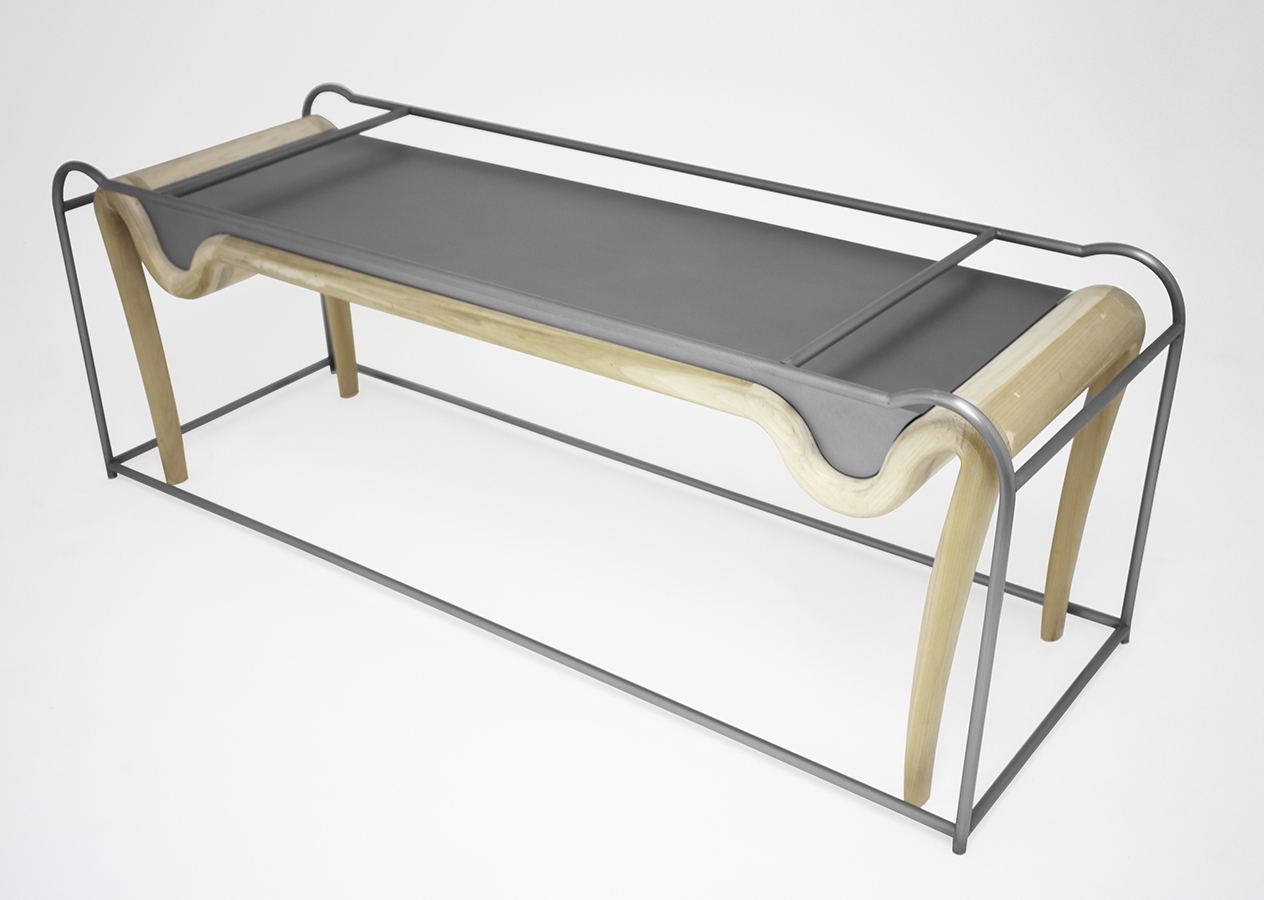
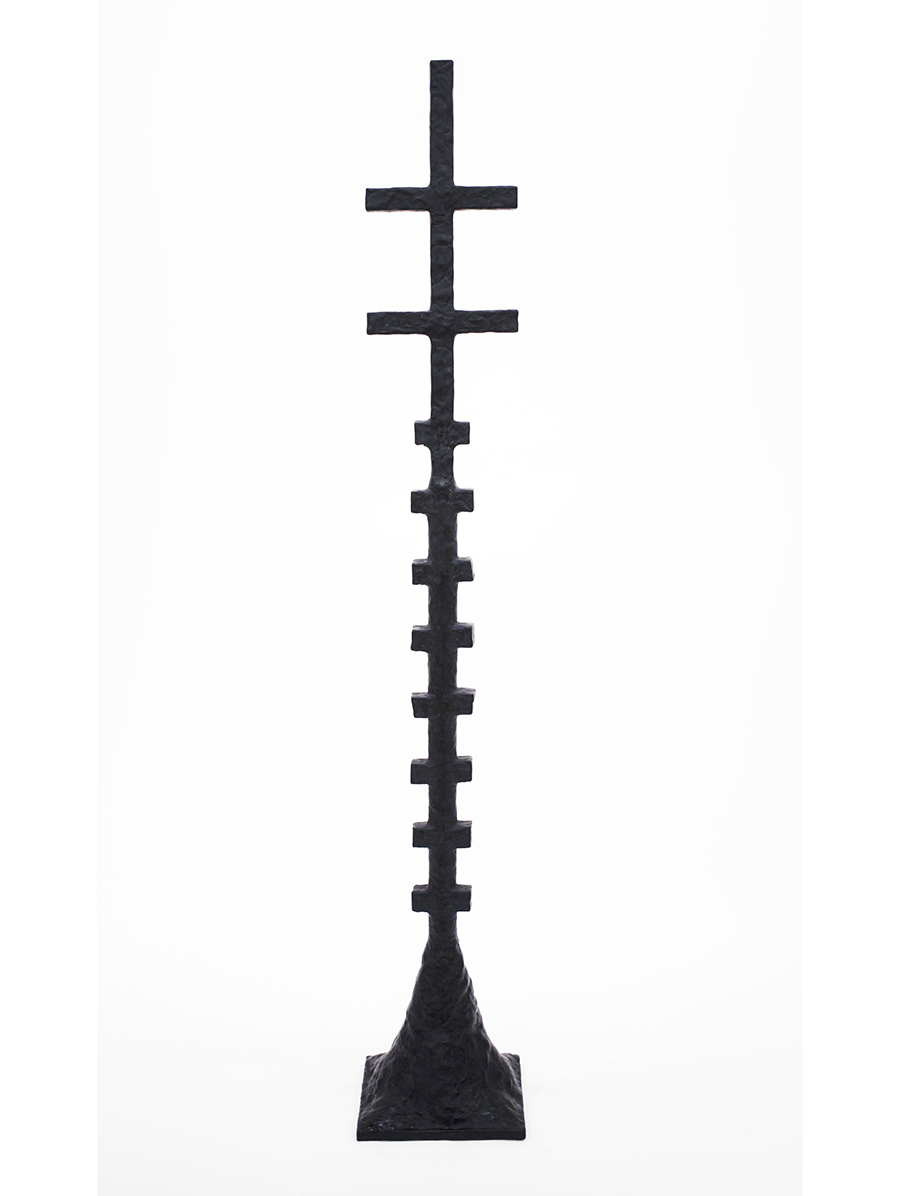
Previously in Sight Unseen you said you fight a lot. Is that still true?
Lauren: Yeah.
Christian: Yeah.
Lauren: It’s definitely lessened. We’re more methodical or thoughtful about it.
In your arguments?
Lauren: Yes.
Christian: We now know that it’s part of the process, so we don’t get frustrated through the fighting. We’re just like, “All right. This is a battle right now.” Honestly, it’s an internal editing process.
So, with the not-bench, how did you go about designing, or more accurately, sculpting that?
Lauren: The first thing we did and drew was the wood portion. It was initially the prototype, but we just immediately were like, “Let’s hold everything in the prototype phase,” because that is really what we’re trying to say here: this is raw and real, and this was birthed this way. We left it instead of taking it, perfecting it, making it out of an oak or a walnut and cleaning it all up.
Christian: It’s made out of poplar, and you never see fine furniture made of poplar. That’s usually for prototyping or for it to be painted. But we loved the finish of it, because you can see all the scarring. It’s super soft.
Lauren: All the putty marks are still there. We just fell in love with the beauty of it as it was.
Christian: It’s representational of the body, of yourself, with all the scarring.
Lauren: The steel tray is a weighted element that slots into the top. Then, there’s a steel skeleton that goes on, and then the final piece is that latex skin. It’s a nesting, seemingly armored form, but in the end, it’s just thin latex that’s so fragile.
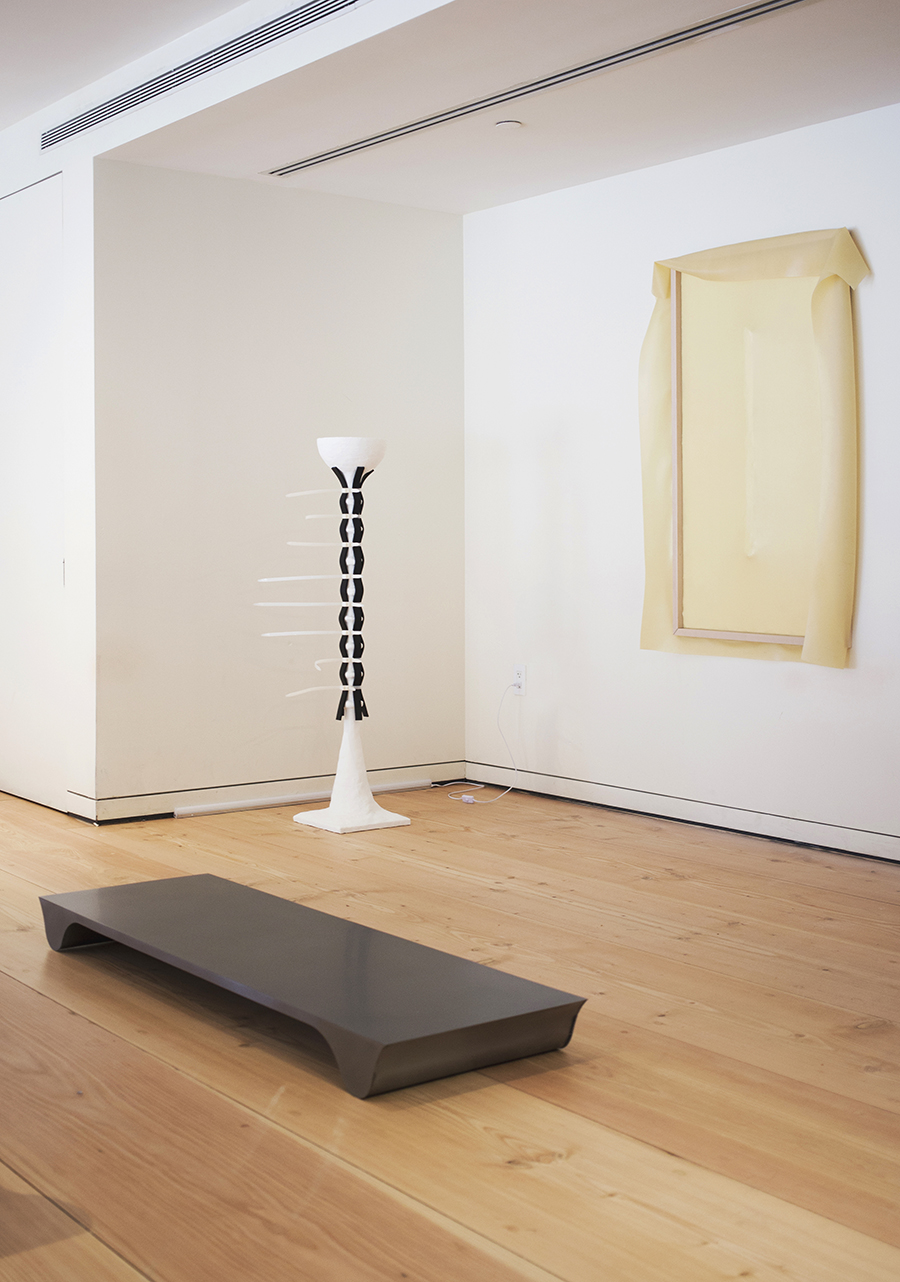
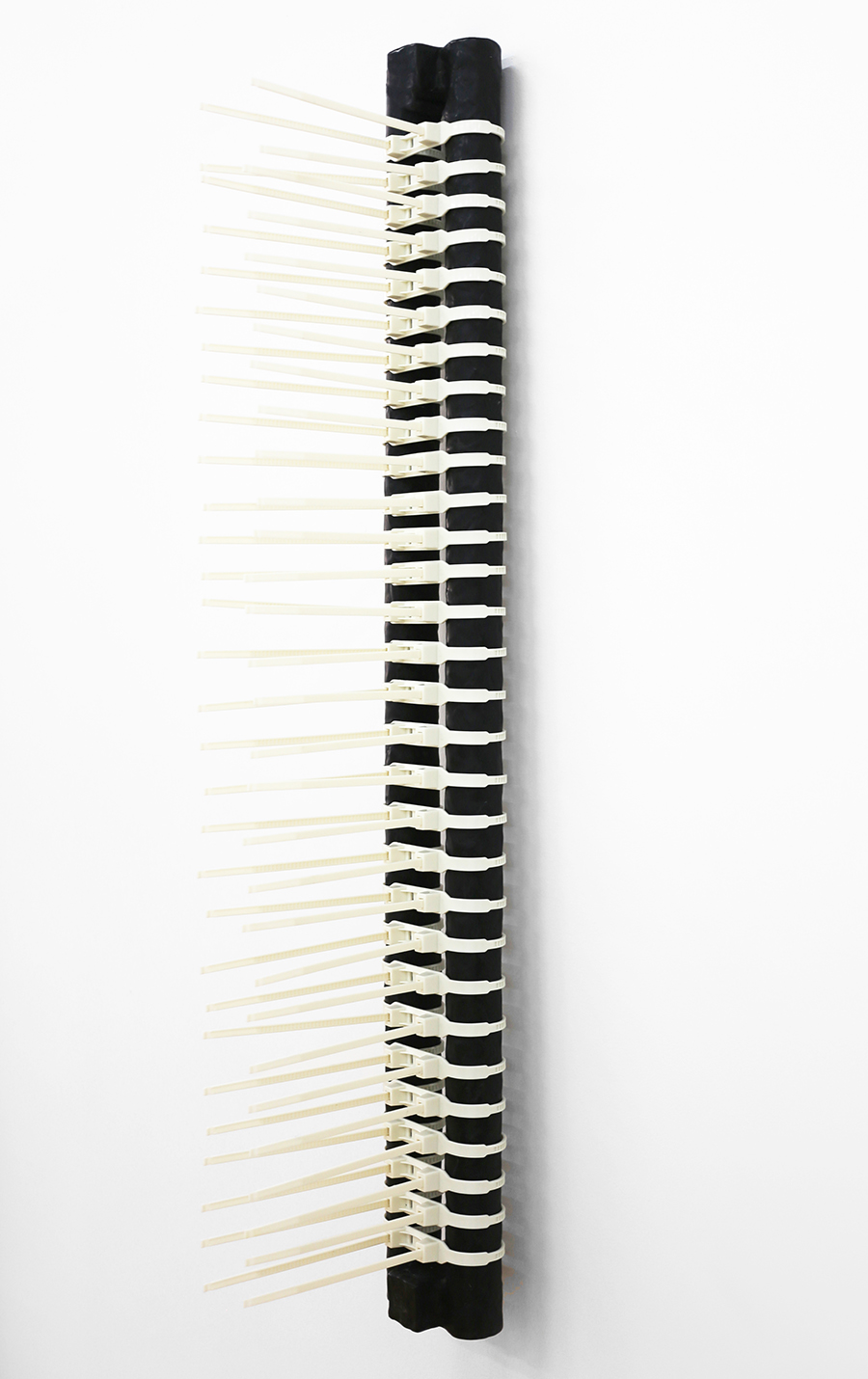
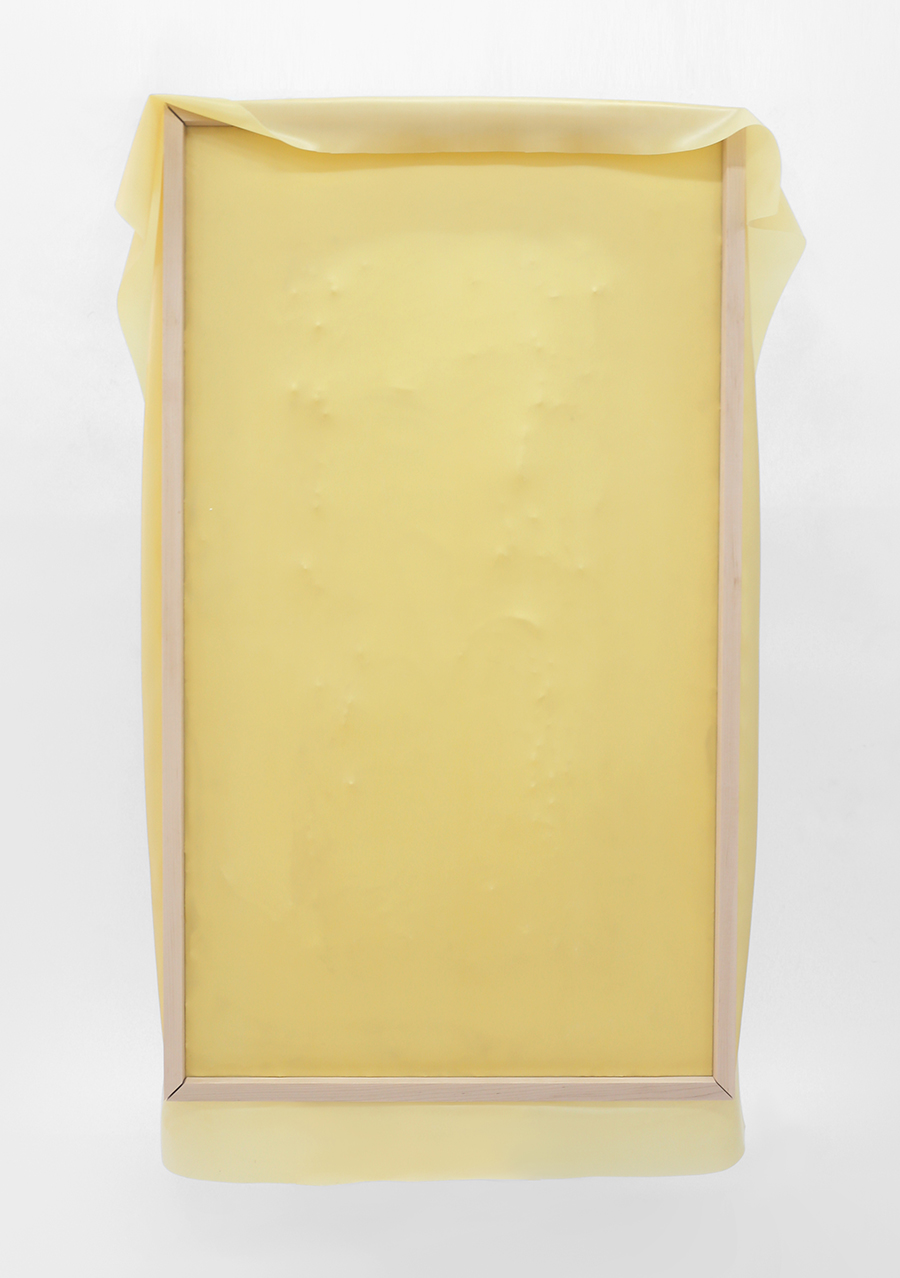
Not to be part of the problem, but I do want to ask about materiality a bit. We talked about the wood, and of course there’s a clear natural resonance there, but the latex really stands out to me. It sort of evokes the skin, but it, for me, brings to mind alien, synthetic-feeling things like latex gloves or medical design or fetishwear.
Christian: What we love about the latex — which starts as a natural material, they just process the shit out of it — is that it has a translucency and the feeling of skin, weird skin. That’s why they make condoms that way. It’s a weird second skin, but it’s still a second skin.
So after breaking into the art world, what’s next for Material Lust?
Lauren: We want to make one-off sculptures that just are what they are and have a lot of meaning behind them.
Christian: There are obvious uphill battles in the art world that we’re choosing to start from the bottom of. But for us, art just has more longevity to it. It allows us to do a lifetime body of work that can conceptually go where we need it to go. With design, it’s more about materiality, proportion, form, and process, rather than ideas. We like to celebrate both art and design, and celebrate both worlds for what they are. Those two sides end up being very different for us. Our Orphan Work stuff is very utopian, and then Material Lust becomes very dystopian, which is great, because we have both of those moods.
